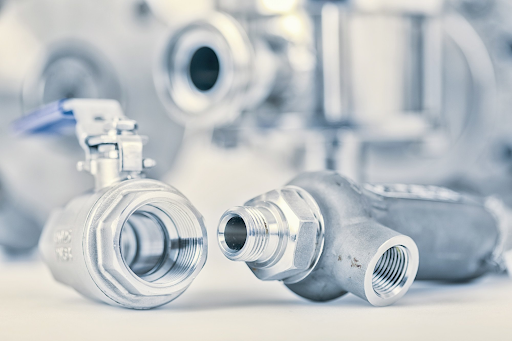If you do industrial work, you’re likely familiar with common control valves. These are valves that control water sources and have different ways to regulate and manage flow and pressure.
For process valves, you’re dealing with a lot more pressure than your common home water valve. So there’s a different installation process for these as well?
Let’s take a closer look.
Gather All Tools and Materials
Installing a valve is crucial to begin by gathering all necessary tools and materials. This includes a variety of wrenches, pipe cutters, Teflon tape, and the valve itself. It is important to ensure that these tools and materials are in good condition and of the correct size for the valve being installed.
Additionally, having gloves, safety glasses, and other protective gear on hand is highly recommended. It is also helpful to have a detailed diagram or manual of the valve installation process to refer to.
By having all the necessary tools and materials gathered beforehand, the valve installation process can be completed efficiently and effectively.
Position the Valves Properly
One crucial step in the installation process is properly positioning the valves. To do this, it is important to first thoroughly understand the system and the needs of the process. Next, carefully select the valves based on their function and size. Once the valves are selected, ensure they are positioned in a way that allows for easy operation and maintenance.
Properly aligning and securing the valves is essential, as any misalignment can result in leaks or malfunctions. Accurate placement of valves also ensures proper flow control and prevents backflow. Taking the time to position valves properly will save time and headaches in the long run.
Apply Lubricant
One essential step is the application of lubricant to the valve’s moving parts. This helps to reduce friction and wear, allowing the valve to open and close smoothly. Before applying lubricant, it is crucial to clean the valve’s internal components thoroughly to remove any dirt or debris that may interfere with its function.
Once this is done, apply a thin layer of the appropriate lubricant to the valve stem, body, and other moving parts. Be careful not to over-lubricate, as this can cause buildup and impact the valve’s performance. Regularly applying lubricant can greatly extend the lifespan and efficiency of process valves.
Test the Valves
Installing process valves may seem like a simple task, but to ensure they function properly, it is crucial to test them before use. The first step is to make sure that the valve is appropriate for the intended application. Then, carefully examine the defects before using a valve.
Next, properly align and tighten the valve using the right tools. To test the valve, open and close it multiple times to check for smooth operation and to ensure it is properly seated. Finally, record and document the results of the valve test for future reference.
Properly installing industrial valves from https://www.everlastingvalveusa.com/process-valve/ is vital for safe and efficient operation in any industrial setting.
Get Your Process Valves On
In conclusion, properly installing process valves is crucial for the success and efficiency of any industrial system. Following the steps outlined in this guide will ensure that the valves are installed correctly and function effectively. Remember to always consult professional help if needed. Now, go forth and install those valves with confidence!
Is this interesting? Read the rest of our blog and learn more!



